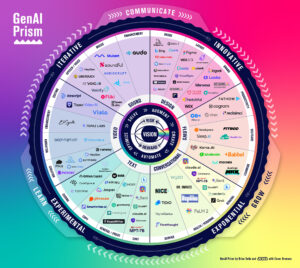
![]() Wherever the balance of influence falls in new media, without genuine, empathetic service, recognition, or reciprocity, we are only extending the very things that prevent us from forming meaningful connections.
Wherever the balance of influence falls in new media, without genuine, empathetic service, recognition, or reciprocity, we are only extending the very things that prevent us from forming meaningful connections.
Connect with Brian Solis: Twitter, LinkedIn, Tumblr, Plaxo, or Facebook
—

Get the new iPhone app!
—
Click the image below to buy the book/poster:


—
Image Source: Shutterstock





So true Brian, as the evolving shift from one-way to two-way business communication requires both recognition and reciprocity in order to realize value from the interaction. It's a quantum shift, if we want it to be.
Indeed…happy new year!
It will be interesting to see how Dr. Caildini's psychological research on reciprocity applies in the social media environment. http://en.wikipedia.org/wiki/Robert_Cialdini
Indeed…I just started re-reading “Influence”…if there is a true shift in the balance of power stemming from the equalization of influence, Dr. Caildini's research would be interesting to analyze in social.
* Reciprocity – People tend to return a favor. Thus, the pervasiveness of free samples in marketing. In his conferences, he often uses the example of Ethiopia providing thousands of dollars in humanitarian aid to Mexico just after the 1985 earthquake, despite Ethiopia suffering from a crippling famine and civil war at the time. Ethiopia had been reciprocating for the diplomatic support Mexico provided when Italy invaded Ethiopia in 1937.
* Commitment and Consistency – If people commit, orally or in writing, to an idea or goal, they are more likely to honor that commitment. Even if the original incentive or motivation is removed after they have already agreed, they will continue to honor the agreement. For example, in car sales, suddenly raising the price at the last moment works because the buyer has already decided to buy. See cognitive dissonance.
* Social Proof – People will do things that they see other people are doing. For example, in one experiment, one or more confederates would look up into the sky; bystanders would then look up into the sky to see what they were seeing. At one point this experiment aborted, as so many people were looking up that they stopped traffic. See conformity, and the Asch conformity experiments.
* Authority – People will tend to obey authority figures, even if they are asked to perform objectionable acts. Cialdini cites incidents, such as the Milgram experiments in the early 1960s and the My Lai massacre.
* Liking – People are easily persuaded by other people that they like. Cialdini cites the marketing of Tupperware in what might now be called viral marketing. People were more likely to buy if they liked the person selling it to them. Some of the many biases favoring more attractive people are discussed. See physical attractiveness stereotype.
* Scarcity – Perceived scarcity will generate demand. For example, saying offers are available for a “limited time only” encourages sales.
Influence is a good book. My psych professor from UCSC actually worked quite a bit with Caildini. I have a transcript of 80 or so psychological influence techniques I'm not allowed to publish but also has some very interesting stuff. Might be time for me to go back and re-read influence. I've been getting very involved with Enterprise 2.0 which is basically focused on internal collaboration within the enterprise. There is a lot of interesting things going here from a psychological, cultural, and organizational standpoint. Adoption is a common problem among companies looking to implement E2.0 so some of the questions folks in the space are trying to answer are:
does collaboration make sense for everyone?
how do you increase adoption of collaboration tools/strategies within the enterprise?
how do you structure your company to make it more suited for collaboration?
what are the barriers to collaboration and how do you overcome them?
what types of leaders are needed for collaboration?
how do you make collaboration successful so that people collaborate to see results?
lots to say about this 🙂
Yes could not agree more Brian. In 2010, I think now more than ever, we're going to see that it's not about reach, it's about relationships. Those who focus on building meaningful relationships will be the ones that thrive.
Well said Sarah! 🙂
Hi Brian, would you allow me to use your Conversation Prism infographic in one of my magazine article's about social media? I would of course reference the source back to you. It is such a powerfull image and so meaningfull that I feel it would be helpfull for the readers… 🙂 . Greetings from Portugal! sbaptis@hotmail.com
Sérgio Baptista